14 Fine Motor Activities To Do At Home: Our Teachers’ List (2025)


Fine motor skills are the tiny movements that make a big impact on a child’s ability to perform everyday tasks. From holding a pencil to buttoning a shirt, these precise actions help your child navigate their world with confidence and independence.
In the foundational years, nurturing fine motor development is essential—not just for school readiness, but for building cognitive, emotional, and social growth too.
At My First Skool, our teachers value building fine motor skills through play. For parents in Singapore looking to support their child’s development at home, we’ve compiled 14 simple and engaging activities to strengthen coordination and confidence.
For each activity, we cover:
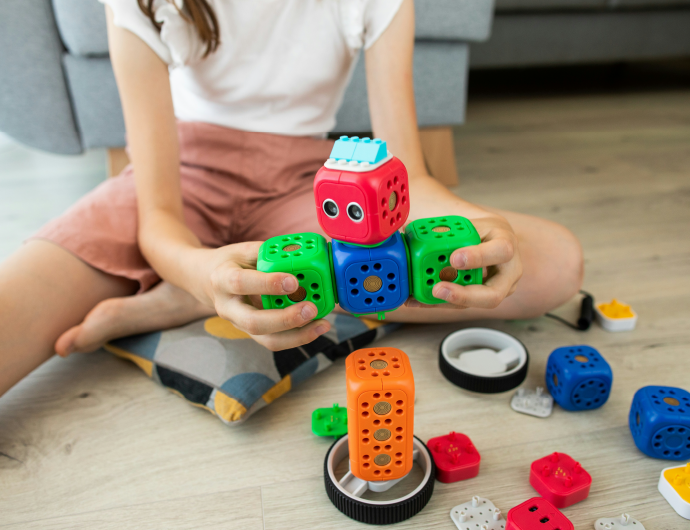
Fine motor skills involve the small, precise movements we make using the muscles in our hands, fingers, and wrists.
These seemingly simple actions—like picking up a crayon, fastening buttons, or tying shoelaces—are essential building blocks for a child’s independence and success.
Strong fine motor skills enable children to perform everyday tasks with confidence, preparing them for more complex activities such as writing, drawing, and self-care. Supporting this area of development early on helps lay the foundation for cognitive growth, emotional resilience, and greater self-esteem.
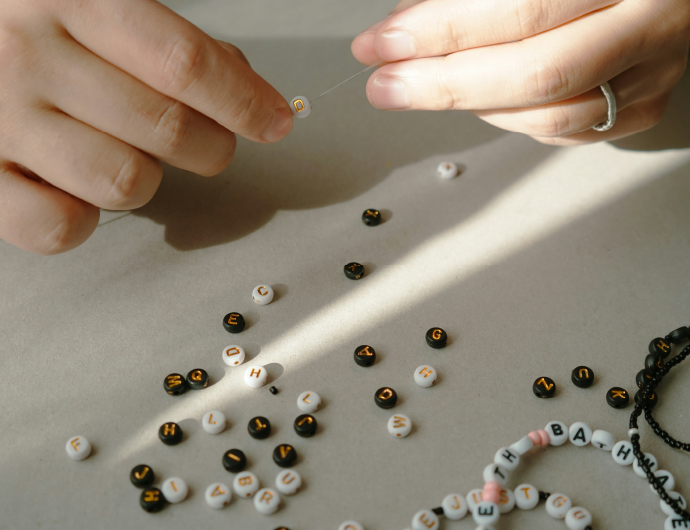
Introduce your child to the joys of threading using safe, chunky beads and string, an activity particularly beneficial for older children. This classic activity strengthens hand-eye coordination and fine motor control, while also offering a chance to reinforce colour recognition and patterning.
What You Need:
How-To:
Threading strengthens finger dexterity and hand-eye coordination, while also introducing pattern recognition and sequencing.
Sometimes, the simplest materials spark the biggest creativity. Let your child tear, arrange, and glue paper scraps to craft a vibrant collage that strengthens hand muscles and imagination alike.
What You Need:
How-To:
Tearing encourages a pincer grasp and finger strength, laying the groundwork for future writing skills.
Turn everyday tools into playful challenges. Using tongs to move pegs between containers boosts precision and grip strength—perfect prep for holding pencils or chopsticks. Alternatively, you can use cotton balls instead of pegs to add variety and challenge to the activity.
What You Need:
How-To:
This activity enhances grip strength and precision, mimicking the movement needed to hold writing tools.
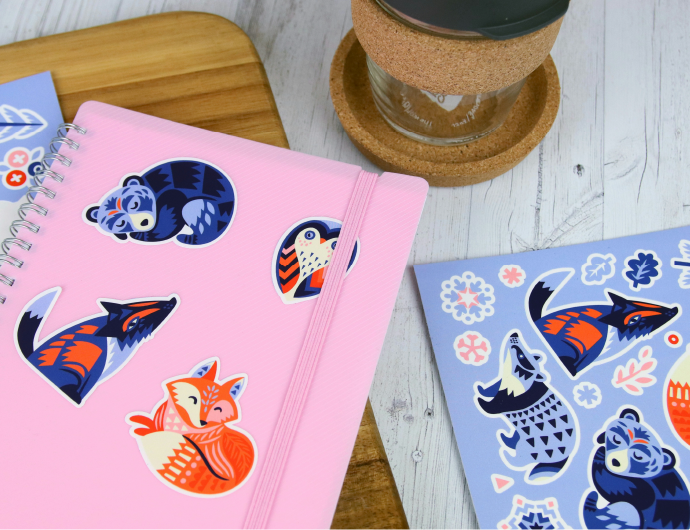
Who doesn’t love stickers? This easy activity is a fuss-free way to engage your little one in focused finger work while creating mini masterpieces.
What You Need:
How-To:
Peeling and placing stickers refines control over finger movements and promotes focus.
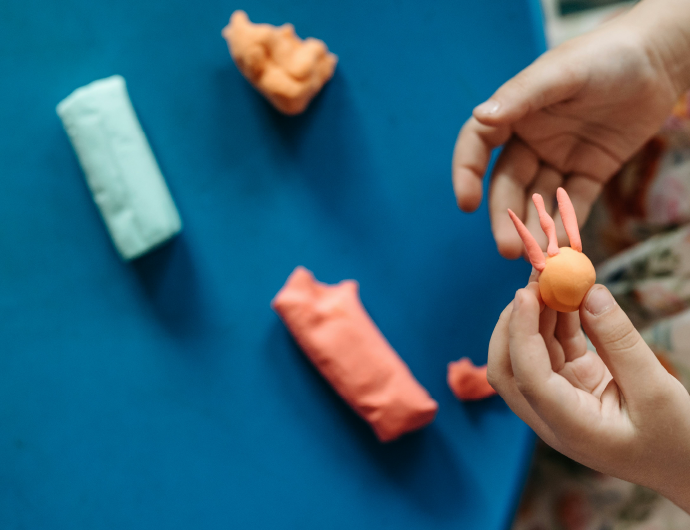
From rolling to squishing, playdough offers endless possibilities. Encourage your child to use their whole hand to roll and shape the dough, which helps in developing hand strength. It’s more than just fun—it’s a full workout for those little hands, enhancing strength and control.
What You Need:
How-To:
Moulding, rolling, and pinching dough strengthens all the small muscles in the hands and fingers.
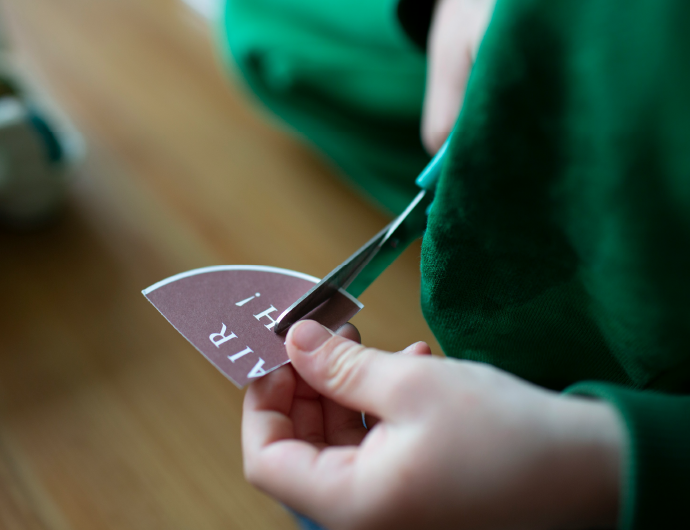
Snip, snip! Cutting with safety scissors is a favourite among children and a vital step in developing coordination between both hands.
What You Need:
How-To:
Cutting improves bilateral coordination, where both hands work together—one holding, the other cutting.

It’s irresistible for a reason! Popping bubble wrap isn’t just satisfying—it’s a sneaky way to strengthen finger muscles and boost sensory awareness. Encourage your child to use one finger to press and pop the bubbles, which enhances their coordination and motor skills.
What You Need:
How-To:
Popping those irresistible bubbles strengthens finger joints and muscles in a highly motivating way.
Add a splash of fun to your child’s day with this sensory-rich activity. Ensure that the sponge pieces are large enough to prevent any risk of choking if your child tends to put items in their mouth. Transferring water with a sponge encourages hand strength and introduces basic science through play.
What You Need:
How-To:
Squeezing helps build hand strength and control while offering a fun sensory experience.
Sorting coloured pins may seem simple, but it’s secretly powerful. While this activity focuses on fine motor skills, it also engages larger muscles in the arms and shoulders. This playful task strengthens pincer grasp while reinforcing visual discrimination and colour matching.
What You Need:
How-To:
Pinching clothespins refines finger muscles, and the matching aspect boosts cognitive skills.
Buttoning isn’t just a life skill—it’s also a brain-building challenge. DIY button boards help young learners develop independence and finger dexterity.
What You Need:
How-To:
Buttoning involves a complex sequence of actions that teach independence and dexterity.
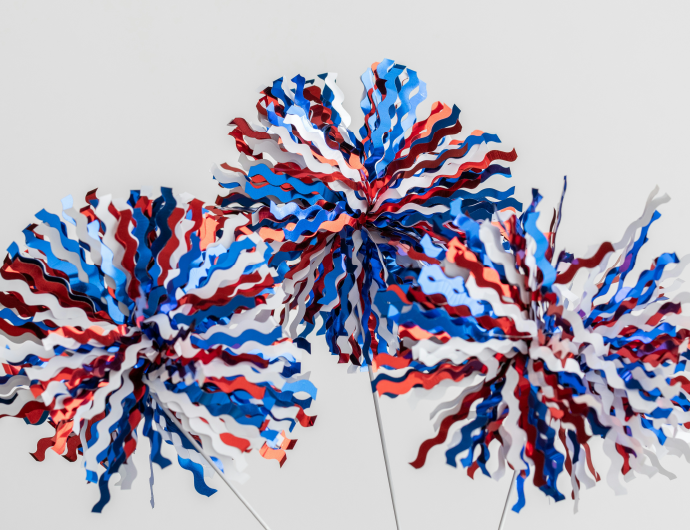
Tiny hands love a challenge. Watch as your child carefully pushes pom poms through small openings, enhancing control, precision, and problem-solving all at once. You can also explore other ideas like using different-sized pom poms or adding a time challenge to keep the activity engaging.
What You Need:
How-To:
This activity combines problem-solving with finger strength and control.
Let your kids’ fingers explore a world of textures with a sensory bin. As they scoop and search, they’re quietly building coordination, focus, and curiosity.
What You Need:
How-To:
Scooping, grabbing, and sifting help refine fine motor skills while providing rich sensory input.
Introduce your child to the calming rhythm of lacing. This timeless activity builds patience, sequencing skills, and the bilateral coordination needed for writing.
What You Need:
How-To:
Encourages bilateral coordination and improves focus, sequencing, and patience, all while developing fine motor skills.
A colourful game with big benefits—using tweezers to sort pom poms strengthens finger precision while reinforcing focus and pattern recognition. This activity is particularly beneficial for children at certain ages, typically between 3 and 6 years, as it helps refine their pincer grasp and hand-eye coordination.
What You Need:
How-To:
This enhances pincer grasp, visual discrimination, and colour recognition.
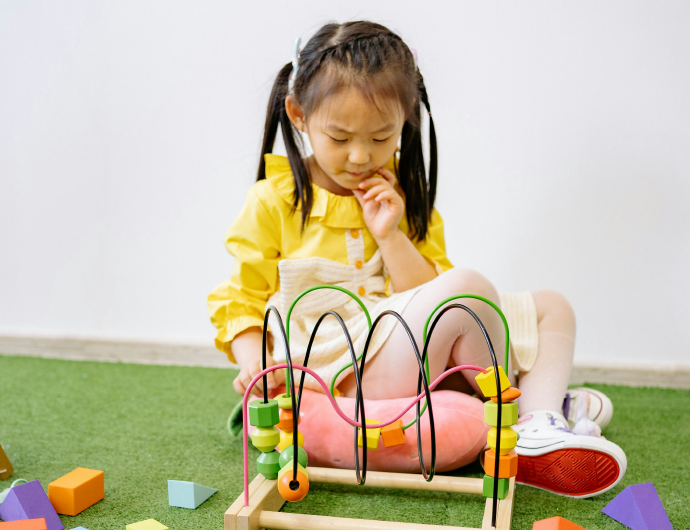
Fostering fine motor skills at home can be a fun and rewarding journey for both you and your child. The activities listed not only strengthen important skills like hand-eye coordination and dexterity but also promote creativity, problem-solving, and independence.
While home activities lay a strong foundation, developing fine motor skills consistently in a nurturing school environment can make an even greater difference. In Singapore, preschools play a key role in the development of your children’s fine motor skills as well.
Fine motor skills are crucial in the early stages of child development, especially during the preschool years.
In preschool, fine motor skills are linked to:
At My First Skool, we recognise the significance of fostering these abilities in our learning environments, where every class activity is designed to nurture a child’s dexterity and coordination.
Our teachers thoughtfully design everyday experiences that strengthen children’s coordination, confidence, and independence, helping them thrive both in and out of the classroom.
With our holistic approach to infant care, your child will have the support they need to grow confidently, develop essential skills, and discover their potential.
Whether at home or with us, nurturing your child’s fine motor abilities is a vital step toward preparing them for a bright future.

Every year, over 26,000 families all across Singapore see their children benefit from our relationship-based curriculum – one that emphasises forging strong bonds between children, teachers and parents.
Find a centre near you or take a virtual tour to explore our learning environments and learn how your child can thrive.